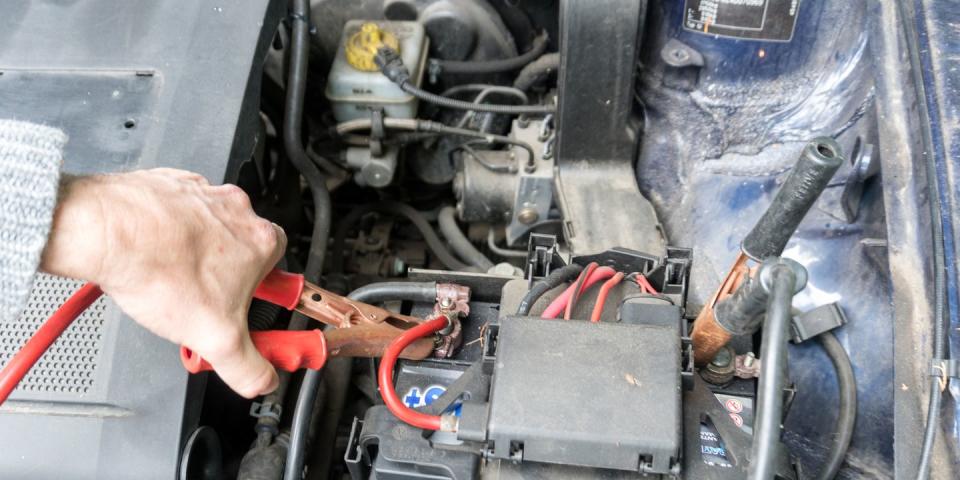How to Jumpstart Your Car If You Haven't Driven It in Weeks

With most of the country currently on lockdown due to the COVID-19 (coronavirus) pandemic, the roads are looking pretty empty these days. There's a good chance you haven't driven your car in a few weeks—and a car can only sit unused for so long before its battery dies. Now's the time to go and check yours.
If your battery is indeed dead, the fastest way to revive it is a quick jumpstart. This simple trick takes less than five minutes and only requires a set of jumper cables and another vehicle that's running.
If you've never learned how to jumpstart a car, or you need a refresher on the ins and outs of doing it safely, here's everything you need to know.
Jumper Cables
Any pair of jumper cables is better than not having any at all. But if you're buying new cables, look for ones that are 4 to 6 gauge in size and at least 20 feet in length. Beefier cables and heavy duty clamps will be more durable and provide a better connection. It's not always possible to place vehicles right next to each other, so having longer cables will ensure the batteries can reach each other.
This jumper cable set from Cartman costs less than $20 and comes in a handy bag that can easily fit in your trunk or under a seat.
Making the Connection
When handling jumper cables, keep the red and black clamps from touching, ensuring your cables aren't mishandled when setting them up. Also try to have one person at each end to make the connection and prevent the clamps from touching. If the clamps do touch when they're hot, you could cause a short in either vehicle and create some dangerous sparks.
Start by making sure the running vehicle with a good battery is parked next to the vehicle that's dead. Open the hood of each vehicle and identify where the battery is located. There's usually a plastic hood covering the battery or the battery posts. You'll need to remove this hood to access the posts. It's best to have the proper tools to do this before you get into a situation like this, so take the time to get familiar with how your battery is setup.
Once you have access to the battery posts, determine which one is positive (+) and negative (-). The positive post may have a red cable attached, but it's best to look for a plus or minus sign to determine its polarity.
Brush away any dirt or gunk from the posts, because you'll need to create as clean and solid connection as you can. First, connect one end of the red clamp to the positive post on the dead battery. Then, connect the matching end of the red clamp to the positive post on the functioning battery.
Next, connect the black or negative clamp to the negative terminal on the good battery. Instead of connecting the remaining negative clamp to the dead battery, find an unpainted engine bolt or piece of the vehicle's frame and secure your clamp to that. This will ensure a safer jump situation.
Start Your Engines
Start the functioning vehicle first, then try to start the dead vehicle. If the interior lights come on and you hear the engine turn over but it won't start, then you may have another issue. If you hear a clicking sound when you try to start the vehicle, you might have a bad starter.
Use a multimeter to test your battery voltage. It varies with vehicle types, but it should read slightly more than 12 volts when the vehicle is turned off. If your battery is in good shape, then it's time to troubleshoot other issues.
If your vehicle fires up and your jump was successful, leave it running while you carefully disconnect the cables, making sure the clamps don't touch. Keep your vehicle running until you've reached your destination, which will give it ample time to recharge so you aren't stuck again with a drained battery.
No Vehicle Needed
Portable power packs now have enough juice to jumpstart a vehicle. You no longer need to find another vehicle to give you a jump—just take your fully charged power pack, attach it to your dead battery, and give your car a start. Just be vigilant about keeping the pack charged, as most packs are only good for single jump before they need to be charged. Jumpstarters like the Noco Genius can also charge smartphones and other devices via their USB ports.
It's still wise to always carry jumper cables in your vehicle in case your power pack fails or isn't fully charged.
You Might Also Like

